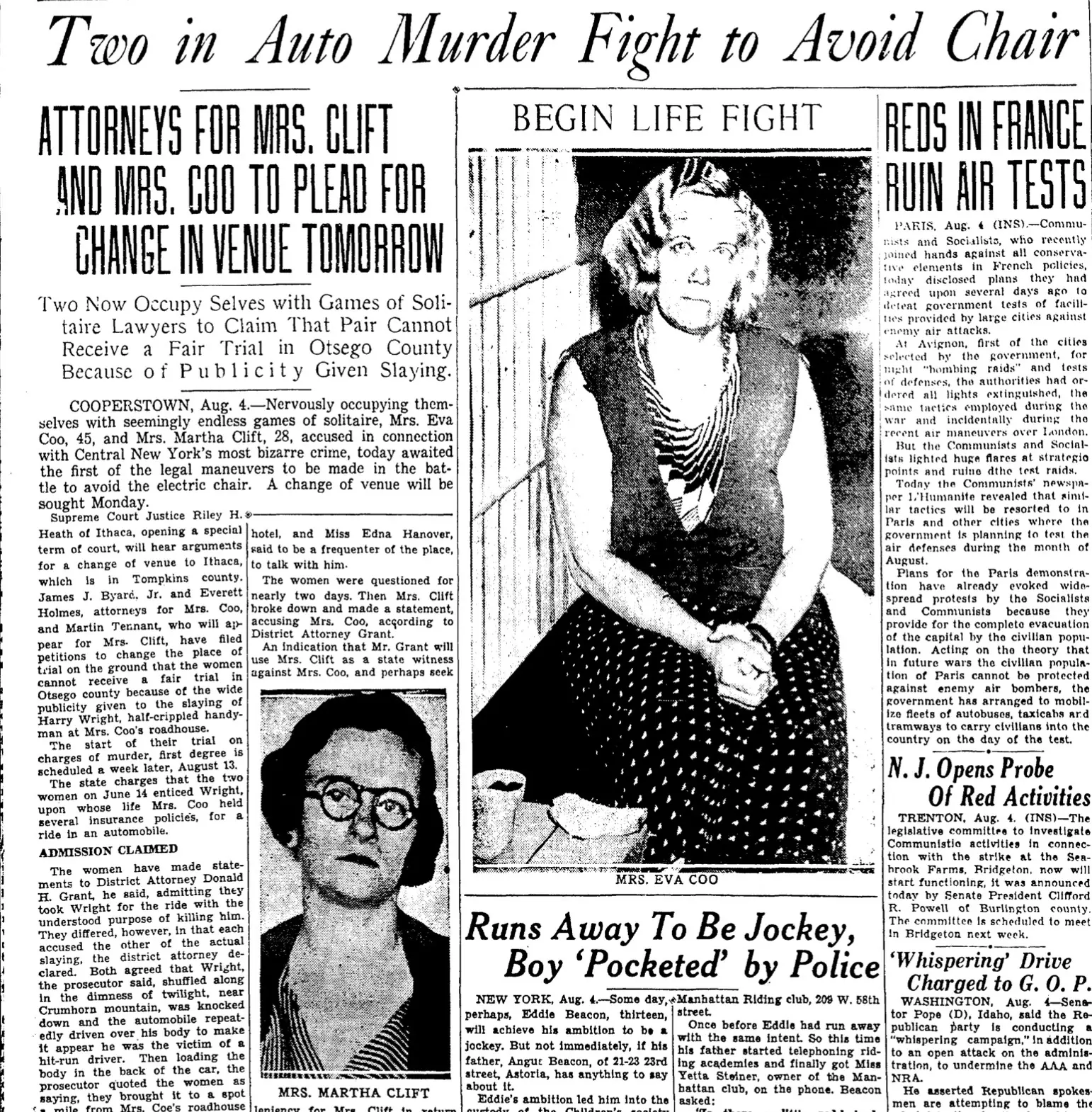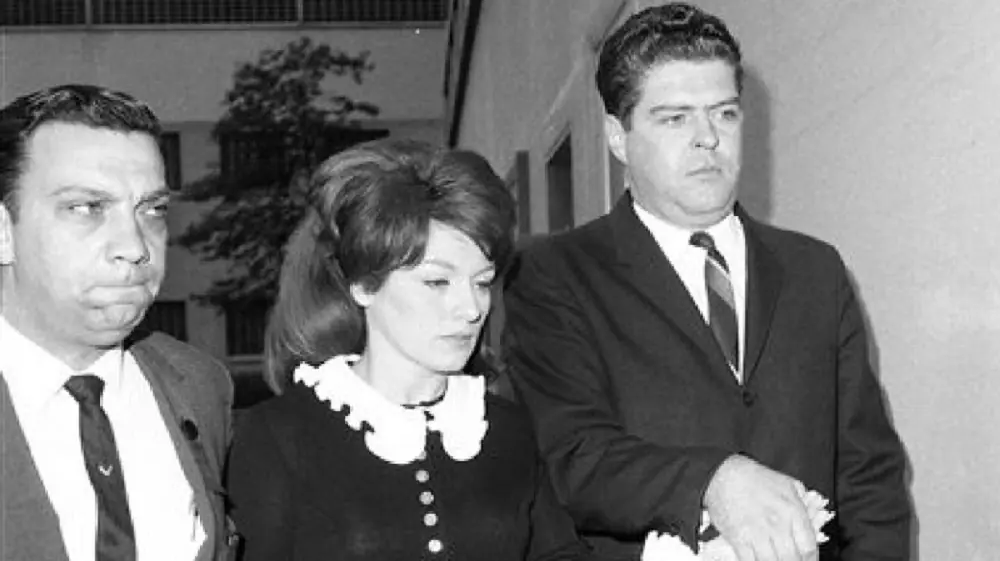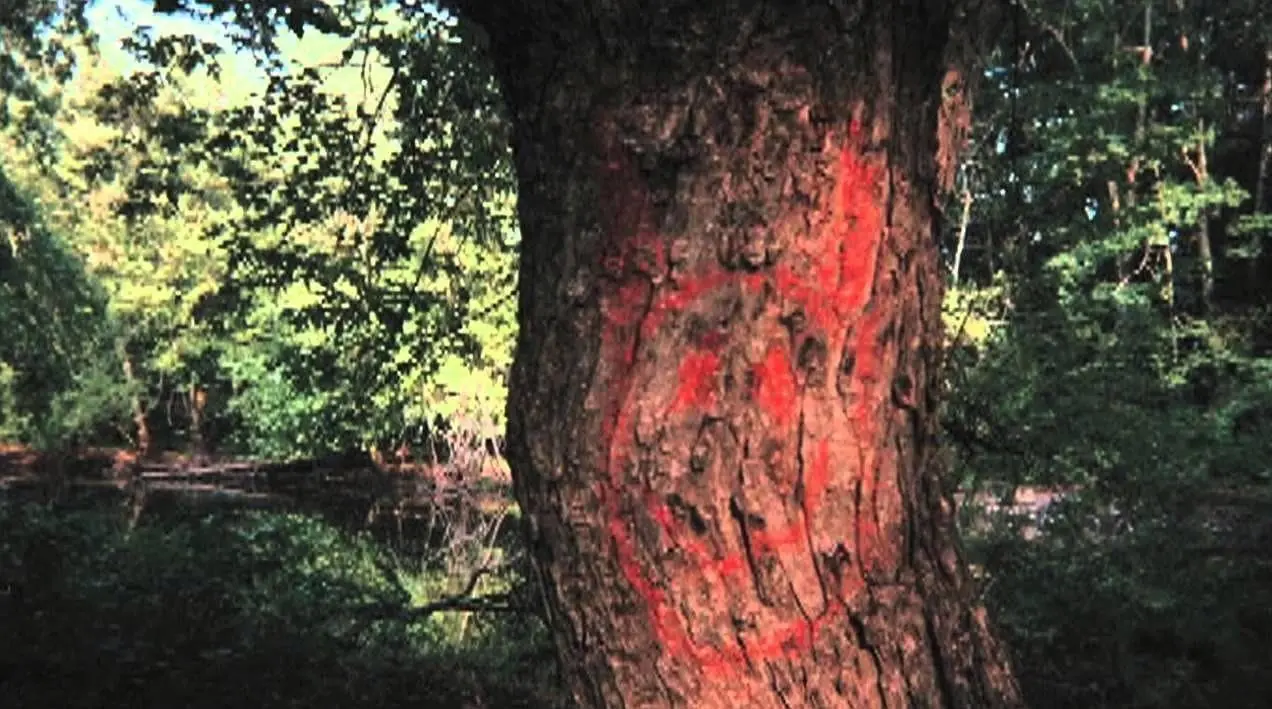8 SHOCKING CRIMINAL CASES Worthy Of A Film Adaptation

They make you think or simply shock. Authentic criminal cases that could easily inspire a movie script.
Eva Coo: A Highly Independent Woman
Dubbed the “Diva of Death Row,” Eva Coo was born in Canada as Eva Curry in 1894. She had a sharp business sense, an entrepreneurial streak, and relatively few scruples. Independent and resourceful, she successfully ran her own business, providing a livelihood for herself and a dozen or so employees, most of whom were women. She even paid for their health insurance, as she cared about keeping her business “clean.” Everyone knew her, and she knew everyone. Shocking criminal cases
The clientele of her establishment, which offered carnal and spirited pleasures, included politicians and police officers. In short, she managed her affairs exceptionally well. Moreover, she thought ahead. “Nothing lasts forever,” Eva reasoned, a sentiment fully shared by her close friend Martha Clift. A sensible woman without a male protector must consider her future. With this mindset, Eva systematically encouraged her employees to purchase life insurance policies, generously assisting them with premium payments.

She ensured only one thing: that she was the beneficiary of each policy. Finally, in 1934, she decided it was time to cash in. Harry “Gimpy” Wright, a small-time drunkard and Eva’s ward, became her first victim. Everything might have gone smoothly—the coroner ruled Gimpy’s death an accident—if Eva hadn’t been overcome by impatience. Before the unfortunate man’s body had even properly cooled in the grave, she was already demanding the insurance payout.
This raised enough suspicion for investigators to take a closer look. An exhumation was carried out, and both women were brought directly to the cemetery for questioning—an event that went down in history as one of the most grotesque interrogations in criminology. While one detective led the arrested women around the grounds, several others moved decomposing remains and placed them along their path. Repeatedly stumbling upon corpses, the women nearly had nervous breakdowns—and it’s hard to blame them.
Martha was sentenced to 20 years, while Eva received the death penalty. “Goodbye, darlings” were Eva’s last words before she became the third woman executed in the 20th century in the electric chair at Sing Sing, after Annie Antonio and Ruth Snyder. Until the end, she could not understand why none of her former friends came to visit her in prison.
Skylar Neese: Psychopathy on Twitter
2012, West Virginia. Three inseparable friends: Skylar Neese, Rachel Shoaf, and Shelia Eddy. Thousands of social media posts, countless smiling selfies, endless declarations of loyalty and love—as is typical among teenage girls. All beautiful, talented, and popular. The queens of their school community. The crème de la crème.
On the night of July 6, 2012, Skylar vanished without a trace. She slipped quietly out of her bedroom window and seemingly disappeared into thin air. An industrial camera captured her getting into a dark green sedan. Had she met someone dangerous online? Naively trusted a stranger? Her devastated parents searched frantically. Meanwhile, Rachel and Shelia were, of course, by their side—comforting and soothing them. Skylar’s family treated the girls almost like adopted daughters; after all, they had known each other forever.

Six months passed, and Rachel finally cracked. She fell into uncontrollable hysteria, prompting her mother to call emergency services. In the background, there were blood-curdling screams. It wasn’t a stranger who took Skylar’s life—it was her two best friends. They lured her out of her home, drove her to the woods, counted to three in unison, and attacked. Over fifty knife wounds. They failed to bury her body, so they left her there. Skylar reportedly kept asking, “Why?” The question remains unanswered to this day, though rumors have surfaced. Allegedly, Rachel and Shelia were romantically involved, and Skylar might have threatened to expose them. Allegedly. Or perhaps they had simply stopped liking her. She had become so annoying, they thought. They just wanted to “get it over with” quickly before leaving for summer church camp.
Shelia Eddy was addicted to social media, particularly Twitter. Her profile and tweets are still accessible, and reading through them is chilling—a rare chance to observe the activity of a textbook psychopath up close. Although she hypocritically posted a grief-stricken message about Skylar’s death (“I’ll always think of you, my dearest friend”), digging deeper into her timeline, beyond the miles of posts fangirling over Nicki Minaj, Pretty Little Liars, and complaints about allergies, reveals chilling glimpses of her true self:

On the very day of the murder, however, Shelia was excited about having a Law & Order marathon on TV. How untouchable and invincible must one feel to post something like that? Since 2013, Rachel and Shelia have been in prison. The idea of expressing remorse has yet to occur to either of them.
Alice Crimmins: Condemned for Her Sensuality
To be fair, two subpar films have been loosely based on the case of Alice Crimmins. However, neither has attempted to delve deeply into the psychological and sociological phenomenon that victimized both Alice and her murdered children. Missy and Eddie lost their lives in July 1965. For more than half a century, people have speculated about this tragedy and about Alice herself. Was she guilty? Was she not? Did she kill her children or not? Public opinion in the late 1960s was unanimous: yes, she did it. But were there irrefutable proofs? Hard evidence of guilt? Testimonies from credible witnesses?

Of course, there was “evidence,” and it went as follows:
- Alice Crimmins enjoyed sex.
- She wasn’t faithful to her husband.
- She swam naked in pools—and with company.
- She bought frozen dinners.
- She wore makeup. Heavy makeup.
- She donned short skirts, high heels, and dyed her hair red.
In other words, Alice Crimmins was capable of absolutely anything.
The media frenzy tore apart a woman who was sexually liberated and openly admitted her physical desires long before such behavior became socially acceptable. In the midst of this tasteless circus, everyone seemed to forget that two young children had been brutally murdered. The trial over Alice Crimmins’s makeup proved far more captivating. Meanwhile, the truth about the deaths of Missy and Eddie remains unknown to this day.
Smiley Face Killer: Maybe, Maybe Not?
An excellent premise for a psychological thriller or neo-noir film, the Smiley Face Killer is a working theory devised by two retired New York detectives, Kevin Gannon and Anthony Duarte. According to the theory, an unidentified serial killer is active in the western United States, targeting young men near bodies of water and leaving a “signature” in the form of graffiti featuring a smiling face—something reminiscent of Red John from The Mentalist.

All the victims—of whom detectives counted 45 across 11 states—were athletic, attractive, and popular college students. One alleged victim of this killer was Brian Shaffer, a medical student from Ohio, who seemingly vanished into thin air in the middle of a crowded club. His body has never been found. How he managed to leave the club without being caught on camera remains unknown.
The theory has few supporters and has been met, to put it mildly, with skepticism by most of the local investigative units involved. However, this only enhances its potential as a cinematic storyline.
Amanda Todd. Bullied by the internet
A 15-year-old Canadian girl, driven to the point of despair by online bullying, which unfortunately continued even after her suicide.
At the age of thirteen, Amanda Todd fell victim to the so-called capping (short for screen capturing), a specific practice used by Internet pedophiles – she allowed a stranger to persuade her to expose her breasts in front of the camera. This is how her drama began, because the persecutor threatened to make the photo public if Amanda did not give a full show for him. At some point, he actually created a fake profile on Facebook, placing the known photo as the profile photo and sending invitations to all of the girl’s friends. Tormented by depression, panic attacks and neurosis, Amanda tried to commit suicide by drinking bleach.

Miraculously saved, upon her return, Amanda found dozens of mocking memes in search engines ridiculing her suicide attempt. These continue to appear to this day. The Todd family moved three times, Amanda changed schools three times, and each time her past caught up with her again. In September 2012, she recorded a heartbreaking nine-minute video, where through a series of notes, she shared her story, lamenting her overwhelming loneliness and the lack of even one kind soul. A month later, she was dead. As of February 2017, the video had over twelve million views. Following Amanda Todd’s case, debates have been ongoing about changes in Canadian law to better combat cyberbullying and capping.
Meanwhile, the hateful memes still appear. Some even post them on a page dedicated to Amanda Todd’s memory…
Kris Kremers and Lisanne Froon. Strange lights in Panama
Two Dutch students, Kris Kremers and Lisanne Froon, went on a hiking trip with backpacks in Panama. They went missing without a trace in April 2014, and their bodies were found several months later. The cause of death could not be determined. A series of mysterious photos found on the girls’ phones and camera memory quickly led to the creation of several conspiracy theories, some fantastical, others a bit more plausible. It turned out that Kris and Lisanne had unsuccessfully tried to contact the police almost ninety times (!). The series of over ninety photos leaves a rather grim impression. Some show absolutely nothing, while others feature mysterious lights and flashes, and the back of Kris’s head, who appears to be injured. According to investigators, the girls, trapped in the ravine, might have tried to light their way with the flash or tried to attract the attention of the search team (the lights!).

Unprepared for climbing, without food, water, spare clothes, a compass, or a flashlight, they likely died of exhaustion. But… why did they wander so far? They crossed five ravines and three rivers! Why do some bones show signs of bleaching but have no damage indicating cutting or dismemberment? Why were Kris’s shorts found neatly folded next to the bodies? Why didn’t the girls try to contact their parents, record a message, or mark the trail they were following? Was someone with them? Were they murdered? Why were there so few remains?
The broken ankle of Lisanne’s foot was still stuck in her shoe, the first clue found near the backpack, which had been located by a local woman. A little further on a rock, were the neatly arranged shorts and the other shoe. Did the girls get attacked by a predator? Or is there a more unusual explanation, possibly involving extraterrestrial civilization (because of those lights…)? At some point during their climb, both tourists removed their bras and put them in their backpacks. This immediately reminded internet users analyzing the case of the missing corset of Irma Leopold in Picnic at Hanging Rock.
In any case, this could make for a hypnotic horror story.
Tamám Shud. The Spy Without a Name
One of the most fascinating unsolved cases in Australian history. It concerns an unidentified man who was found dead in 1948 on Somerton Beach. In his pocket was a scrap of paper with the words tamám shud, which in Persian means “finished” or “ended.” It was torn from a 12th-century collection of poems, the Rubaiyat of Omar Khayyam.

The case remains open to this day, and the man’s identity has never been determined. The public’s imagination was sparked by associations with a secret spy code, rumors of undetectable poison, a mysterious suitcase found at a train station, and speculations that the man might have been involved in espionage. Efforts to establish his identity are still ongoing. An intriguing element of the case is its alleged connection to the death of George Marshall, who was found dead in Sydney in June 1945 with an open copy of the aforementioned Rubaiyat on his chest. Authorities concluded that George had committed suicide by poisoning. His brother, David Marshall, later became the first Secretary-General of Singapore ten years later.
Holly Bobo. The Mystery of the Abandoned Bucket
If you search the phrase “what on earth was in that bucket?!” you’ll immediately come across the name Holly Bobo in the results. There is something incredibly tragic about how the drama of the murdered twenty-year-old has boiled down to frantic speculations about what could have been in the bucket that caused the hunter who found it to nearly suffer a breakdown, and why the police refuse to reveal its contents.

“Am I supposed to shoot Drew?” Clint asked, apparently somewhat slow to grasp the situation. He looked outside and saw Holly walking into the woods with a man dressed in military-style clothing. Again, instead of alerting the police, he called his mother…
In September 2014, a hunter found the previously mentioned bucket in the woods. He turned it over and was shocked. Shortly after, he stumbled upon remains that were later identified as belonging to Holly. In connection with the case, five men were arrested. All claimed to be innocent (“I’m a drug addict and a thief, but not a murderer!” said one proudly). No one knows anything; the media circus continues, the court drama continues, and the trial is about to begin… so we may soon find out what was actually in that bucket.

